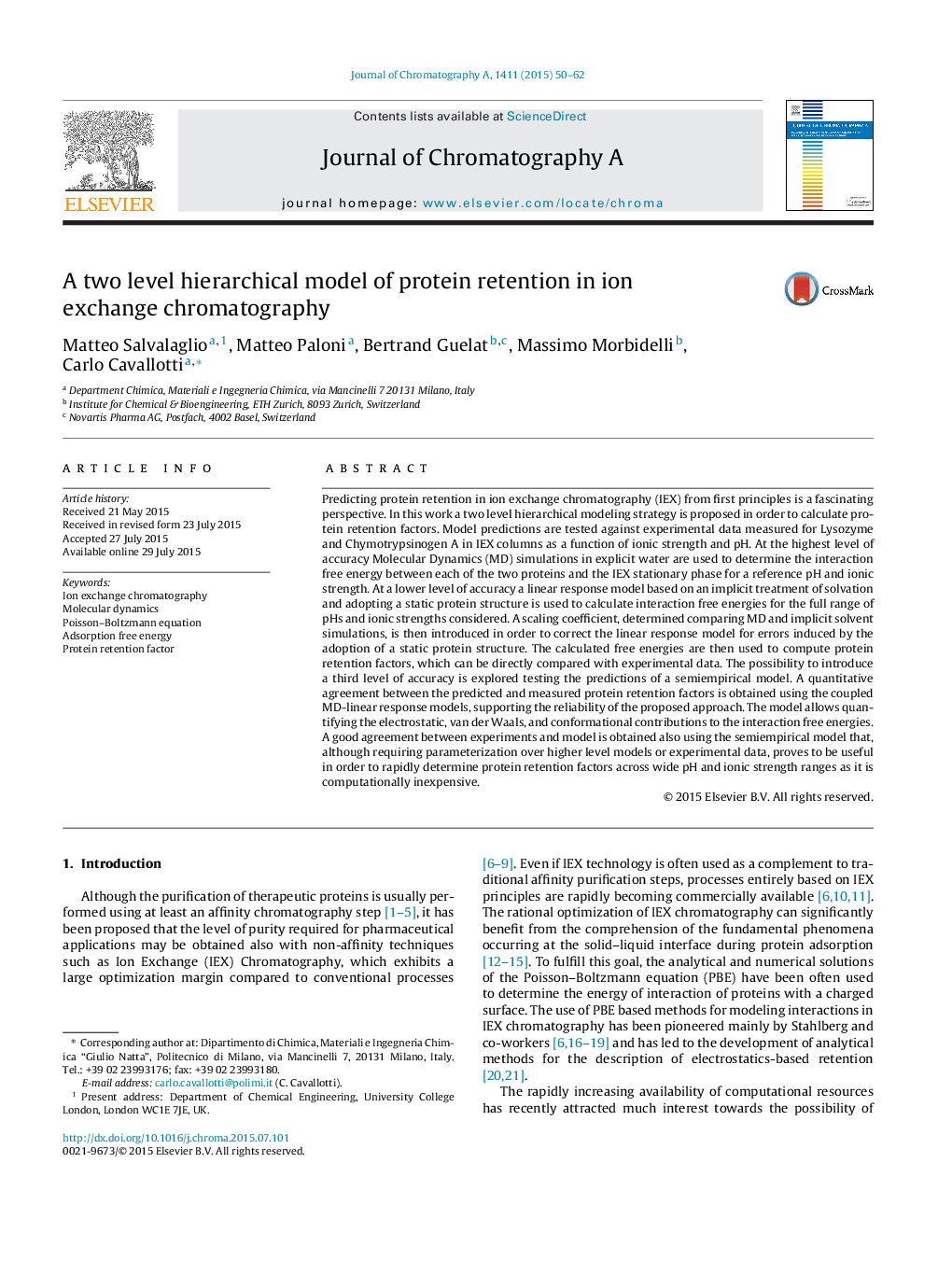| Article ID | Journal | Published Year | Pages | File Type |
|---|---|---|---|---|
| 7611510 | Journal of Chromatography A | 2015 | 13 Pages |
Abstract
Predicting protein retention in ion exchange chromatography (IEX) from first principles is a fascinating perspective. In this work a two level hierarchical modeling strategy is proposed in order to calculate protein retention factors. Model predictions are tested against experimental data measured for Lysozyme and Chymotrypsinogen A in IEX columns as a function of ionic strength and pH. At the highest level of accuracy Molecular Dynamics (MD) simulations in explicit water are used to determine the interaction free energy between each of the two proteins and the IEX stationary phase for a reference pH and ionic strength. At a lower level of accuracy a linear response model based on an implicit treatment of solvation and adopting a static protein structure is used to calculate interaction free energies for the full range of pHs and ionic strengths considered. A scaling coefficient, determined comparing MD and implicit solvent simulations, is then introduced in order to correct the linear response model for errors induced by the adoption of a static protein structure. The calculated free energies are then used to compute protein retention factors, which can be directly compared with experimental data. The possibility to introduce a third level of accuracy is explored testing the predictions of a semiempirical model. A quantitative agreement between the predicted and measured protein retention factors is obtained using the coupled MD-linear response models, supporting the reliability of the proposed approach. The model allows quantifying the electrostatic, van der Waals, and conformational contributions to the interaction free energies. A good agreement between experiments and model is obtained also using the semiempirical model that, although requiring parameterization over higher level models or experimental data, proves to be useful in order to rapidly determine protein retention factors across wide pH and ionic strength ranges as it is computationally inexpensive.
Keywords
Related Topics
Physical Sciences and Engineering
Chemistry
Analytical Chemistry
Authors
Matteo Salvalaglio, Matteo Paloni, Bertrand Guelat, Massimo Morbidelli, Carlo Cavallotti,
